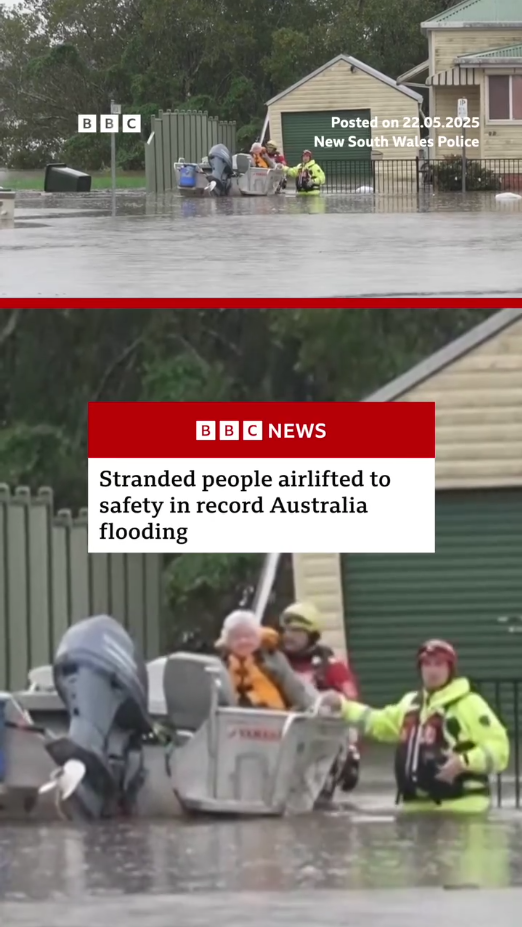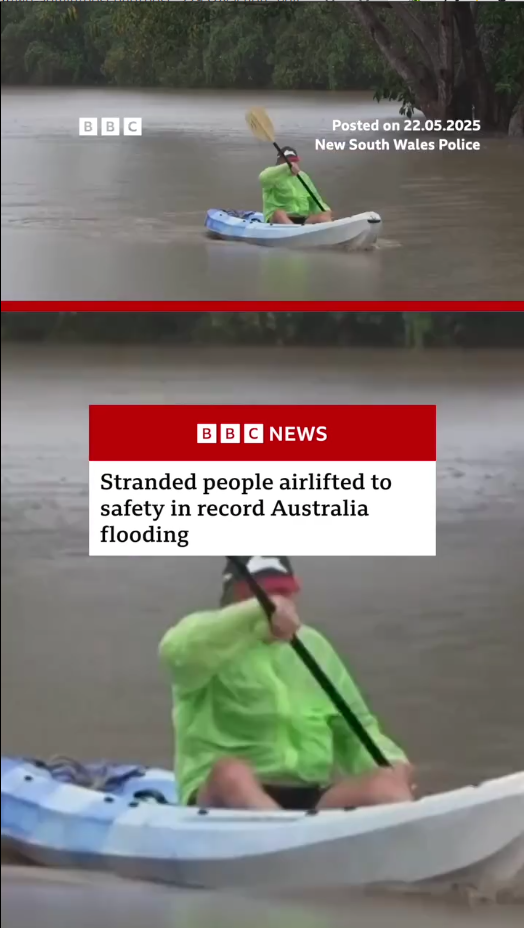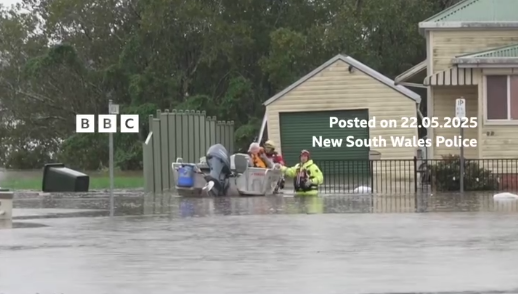
A natural disaster has been declared in the area, as the floods left thousands of homes and businesses without power.
More than 2,000 emergency service workers are attending rescues, including of people who were stranded on rooftops overnight.
Tap the link in @BBCNews’s bio to read why NSW Premier said they “are bracing for more bad news”.
#NewSouthWales#Australia#BBCNews
At Least Three Dead, Tens of Thousands Under Evacuation Warnings Amid Devastating Floods in New South Wales, Australia
New South Wales (NSW), Australia’s most populous state, is once again grappling with the destructive force of nature as torrential rains have unleashed massive flooding across large swathes of the region. At least three lives have tragically been lost, and over 50,000 residents are under evacuation warnings, as emergency services work tirelessly to respond to one of the most severe flood events in recent years.
Torrential Rainfall Triggers Widespread Flooding

The disaster began unfolding earlier this week when a slow-moving low-pressure system parked itself over the east coast, dumping record levels of rainfall in a short span of time. Areas that typically receive monthly rain totals were inundated within just 24 hours. Rivers swelled beyond their banks, low-lying suburbs were submerged, and roads quickly became impassable.
Among the worst-hit regions are parts of the Hawkesbury-Nepean Valley, a flood-prone area northwest of Sydney, as well as towns in the Central Coast and Illawarra regions. The Bureau of Meteorology issued major flood warnings for numerous rivers, including the Georges, Hawkesbury, and Nepean Rivers, where water levels surged alarmingly.
Meteorologists have described the event as “once-in-a-generation” flooding. In some areas, the rainfall totals have exceeded those of the catastrophic 2022 floods, drawing comparisons to past natural disasters such as Cyclone Debbie in 2017 and the Black Summer bushfires, which were followed by flash floods in early 2020.
Lives Lost and Communities Displaced
Authorities have confirmed the deaths of at least three individuals linked to the flooding. In one tragic incident, a man in his 60s was found deceased inside his vehicle, which had been swept off a flooded road in the Hunter region. Another victim, a woman in her 40s, died after her car became trapped in rising waters near the Mid North Coast. The third fatality was reported in the Illawarra area, where a man attempting to navigate floodwaters on foot was overcome by the current.
Emergency responders have reiterated urgent warnings for residents to stay off the roads, avoid floodwaters, and heed evacuation orders. The danger is not only from drowning, but also from unseen hazards such as downed power lines, debris, and unstable infrastructure.
Tens of Thousands Under Threat

More than 50,000 people have been placed under evacuation warnings, with authorities urging them to leave early to avoid being cut off or requiring dangerous rescues. Temporary evacuation centers have been set up in schools, sports halls, and community centers, with local volunteers and emergency service personnel working around the clock to assist displaced families.
New South Wales Premier has declared a state of emergency in the affected areas, freeing up additional resources for disaster response and recovery. “We are doing everything possible to ensure the safety of our communities,” the Premier said in a press briefing. “These floods are unprecedented in some areas, and we urge everyone to take this situation seriously.”
Emergency Response and Heroic Rescues
State Emergency Service (SES) teams, firefighters, and military personnel have been deployed across the region, conducting water rescues and helping vulnerable individuals to evacuate. In the past 48 hours alone, SES crews have responded to over 2,000 emergency calls, including more than 300 flood rescues.
In one widely circulated video, a rescue helicopter crew was seen hoisting a family, including two young children, from the rooftop of their home in Camden. The dramatic footage has become emblematic of the bravery and determination shown by emergency responders during this crisis.
Rescue efforts have been hampered at times by the sheer volume of water and the speed at which floodwaters have risen. Roads have been cut off, communications disrupted, and access to some rural areas has proven extremely difficult.
Infrastructure Damage and Power Outages
The floods have caused significant damage to infrastructure across the state. Power lines have been brought down, resulting in blackouts for tens of thousands of homes. Water treatment facilities have been compromised in some towns, raising concerns about contamination and access to clean drinking water.
Public transport services, including train lines and bus routes, have been suspended or delayed in many regions. Several bridges and highways have been closed due to the risk of collapse or because they are completely submerged.
The financial toll is expected to be enormous, with early estimates suggesting hundreds of millions of dollars in damages. Insurance companies are bracing for a flood of claims, while farmers, already struggling with drought and bushfire recovery, face the prospect of ruined crops and livestock losses.
Climate Change and the Growing Risk of Floods
Experts have pointed to climate change as a key driver behind the increasing frequency and severity of extreme weather events in Australia. Warmer ocean temperatures and shifting weather patterns have led to more intense rainfall events, with shorter intervals between them.
Dr. Amelia Kerr, a climate scientist at the University of Sydney, said: “What we are witnessing is not just a freak event. It’s part of a larger trend where floods are becoming more destructive, more frequent, and harder to predict. We need long-term planning and infrastructure that’s built to withstand this new normal.”
The Road to Recovery
As floodwaters slowly begin to recede in some areas, attention is turning to the massive task of recovery and rebuilding. Authorities are assessing the damage, while aid organizations are mobilizing to provide support for those affected. Donations of food, clothing, and emergency supplies have begun pouring in from across the country.
The federal government has pledged financial assistance for affected families and businesses, including grants for temporary housing, clean-up operations, and mental health support.
For many residents, however, the emotional toll is just beginning. Homes have been destroyed, memories washed away, and entire communities disrupted. For some, this is not the first time they have faced such devastation — and they fear it may not be the last.
Conclusion
The catastrophic floods sweeping across New South Wales serve as a stark reminder of the vulnerability of even the most developed regions to the forces of nature. With lives lost, thousands displaced, and communities underwater, the state is facing a long road ahead. As the immediate danger begins to pass, the focus will shift to healing, rebuilding, and preparing for what may come next in an era where extreme weather events are no longer rare — but alarmingly routine.



